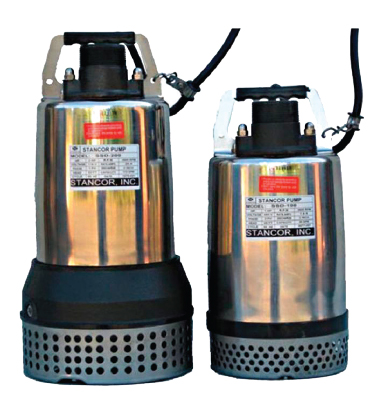By Steve Mosley, BJM Pumps
On a construction site, dewatering is just a nature of the business. Water collects due to rain or a high-water table. Some forms of machinery also need support from water. But project managers have higher priorities than checking on the dewatering pumps. They want to install it and forget about it. While you’ll likely never be able to completely ignore the pump, there are ways to lessen the attention it needs. The best solution is to use a floatless pump control system. Keep reading to learn what floatless controls are and why they’re better than other options.

OPTIONS TO REDUCE PUMP MONITORING
There are different options to reduce the amount of time you spend monitoring your pump(s). We’ve had many customers ask us for a pump that runs dry. This means that the pump runs constantly regardless if there is liquid in the sump. This option is inefficient because the pump is consuming energy without moving any liquid. With a submersible pump, the liquid running through the pump helps to cool the seal faces and motor. With no liquid, there’s no cooling. This leads to catastrophic pump failures that cost you money and brings your construction project to a halt.
Another option is to use an airflow valve in which the valve opens when there is no water. This exhausts the air moving through the pump and creates a cooling atmosphere. With this approach, the problem is the dirty water you’re pumping contains some solids. The solids can cause the valve to get stuck. So, the pump still turns and the airflow isn’t created to cool the seals and/or the motor. This again causes the motor to overheat or the seals to fail.
There are float switches available for pumps. The switches turn the pump on and off depending on the level of the water, but these have issues too. The float can get stuck between the pump and the wall of the sump pit or a foreign object can prevent the float from rising or dropping enough to properly control the turn the pump. Also, the switch in the float can stop responding as the equipment ages.

FLOATLESS PUMP CONTROL PROGRAMMING
The floatless pump control is a device in the control box that measures amps. Amps relate directly to the horsepower. Amps fluctuate with the flow of water within the pump. Lower flow means lower amps. You can program the floatless control to take specific actions based on the amp level to minimize your pump monitoring and save you energy costs.
You can program the control to only run within specific amp parameters. It can turn the pump on at certain time intervals to test the amp level which will determine if the pump should remain on or shut back off. For example, you can set the control to only run the pump when the amp level is between 6 to 10 amps. If amps are below 6, it likely means the pump is deadheading or empty. If amps are above 10, there could be something causing the pump to perform more work that it’s designed for within its operating range. In either case, the control would shut the pump off. The amp check only takes seconds, so the pump isn’t on long enough to generate enough heat that would damage the motor or seals. Lastly, features can be added to the controller to inform the users (via alarm or telemetry) that an event like a check took place.
Industrial Flow Solutions offers floatless controls and we have the expertise to help you program the right levels for your application. The stand-alone control panel is versatile and compatible for a number of industry applications and different pumps. Industrial Flow Solutions has helped numerous construction project manager keep their focus on the more crucial aspects of the job.
FOR MORE INFORMATION
Steve Mosley is regional manager for BJM Pumps. BJM Pumps, headquartered in Old Saybrook, Connecticut, has been providing fluid handling solutions for industrial and municipal services since 1983. Over its thirty-year history, BJM Pumps has grown quickly by supplying world class pumps and accessories, priced competitively, through its global network of stocking distributors. For more information, visit www.bjmpumps.com.
MODERN PUMPING TODAY, November 2019
Did you enjoy this article?
Subscribe to the FREE Digital Edition of Modern Pumping Today Magazine!



